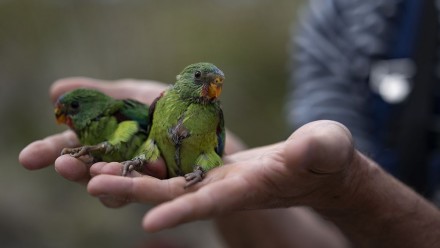From plantings to the paddock: ground-dwelling beetles in a dynamic agricultural landscape
Widespread intensification of agricultural landscapes presents an urgent challenge for maintaining biodiversity and ecosystem function. However, it is unclear how entire landscapes can be managed for mutually beneficial outcomes for agriculture and the environment. My research compared the spatial and temporal distribution patterns of ground-dwelling beetle assemblages (Coleoptera) in a fragmented mixed-cropping landscape. I examined beetles in remnant woodlands and four types of adjoining farmland comprising crop, fallow, native plantings, and fine woody debris applied over harvested crop. I will present findings from my PhD study, based on a large data set of 495 species and 11,360 individuals. Relevant ecological mechanisms such as seasonal movement, edge effects and plant-insect associations will be discussed. My results suggest that farmlands provide important habitat for a large proportion of beetle species. Maintaining farmland heterogeneity with a mix of low-intensity land-uses can provide seasonal habitat resources and facilitate cross-habitat movement.
About the speaker
Kat is a final year PhD candidate at the ANU Fenner School and CSIRO. Her PhD research examined the distribution and dispersal of beetle communities across mixed-cropping areas of the NSW Lachlan Catchment. She completed her Master of Environment degree at Fenner School, where she studied inter-seasonal differences when monitoring grazing responses, and the factors affecting flora detectability in grassy box-gum woodlands.










